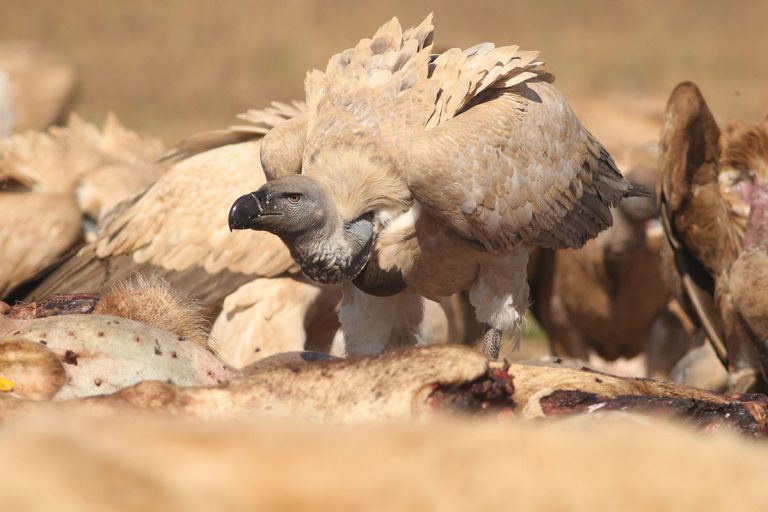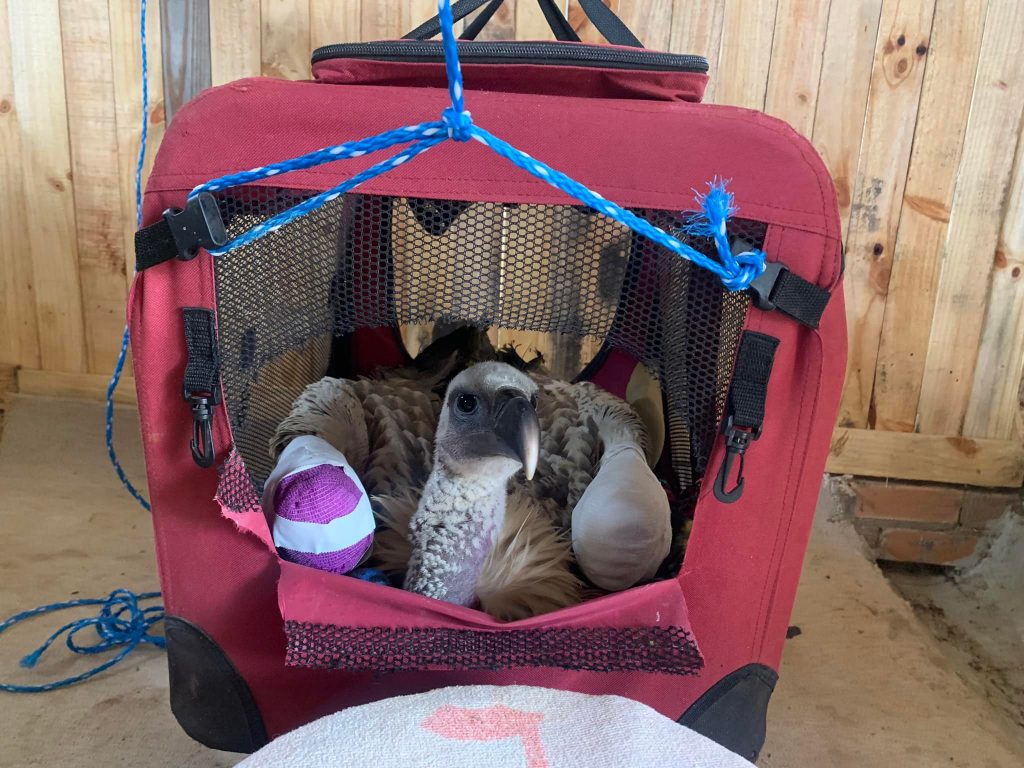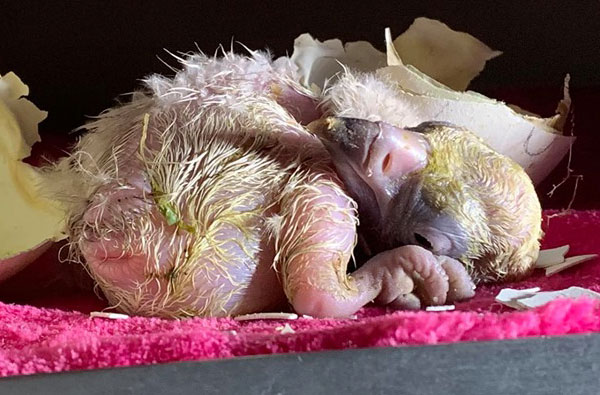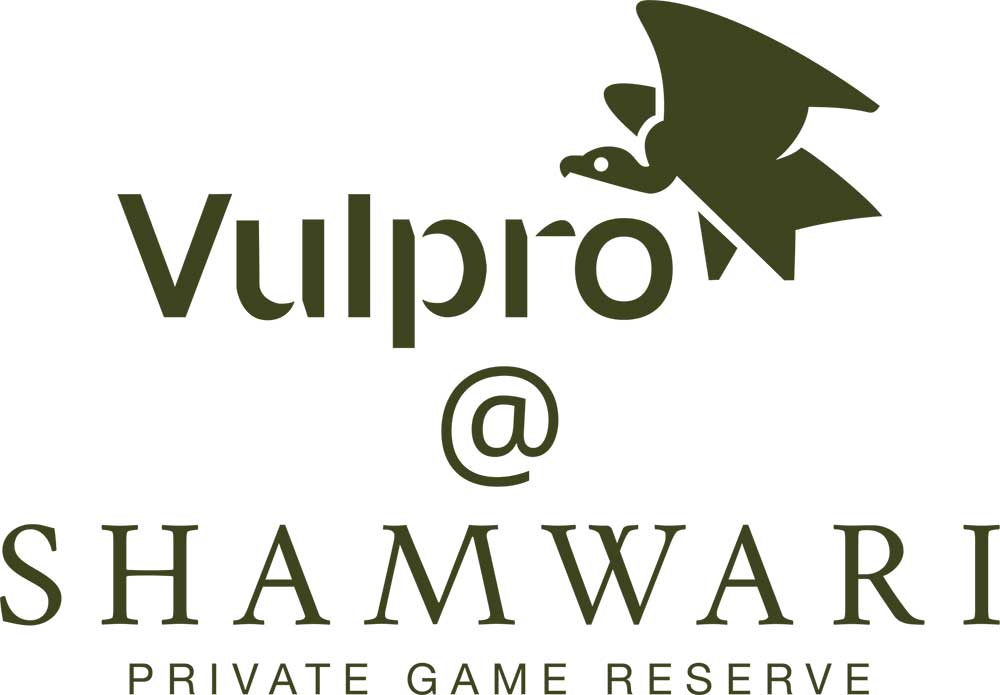Poison Cases
According to the African Wildlife Poison Database (numbers from 1961 – Nov 2019):
THE STATUS OF AFRICAN VULTURES
In 2015, the IUCN Conservation Status of several vulture species were ‘uplisted’ based on their rate of decline. African vultures are facing several threats, making their conservation a formidable task.
Vultures form an important ecological component of our natural environment, cleaning up dead carcasses and decreasing the spread of some diseases. The relationship between vultures and people is also a venerable one – vultures played roles in some early societies, including the Egyptian and the Hindu societies; vultures continue to be used as symbols or metaphors in modern societies; and vulture body parts are used in muthi.
Today, vultures face an unprecedented onslaught from human activities. They have to cope with electrocutions and collisions with electrical structures, poisonings, land-use changes, a decrease in food availability and exposure to toxicity through veterinary drugs, to list just a few of some of the challenges facing vultures today.
Vultures, positioned at the top of the food chain, are an indicator of the health of the environment below them – and dependent for their survival on a healthy environment. As such the work of the Vulture Conservation Programme (“VulPro”) is intended and expected to favourably impact on many other aspects of the environment – beyond vultures.
While a single poisoned elephant can kill hundreds of vultures, wiping out an entire colony or local population, power line electrocutions and collisions are the most profuse threats to vultures in South Africa. The power line grid is expansive and often structures are out of date and unsafe for the large birds to perch on.
Poisoning incidents seem to be on the rise, or at least are much more regularly reported. Poisonings occur from a few means – poachers lace elephant or rhino carcasses to intentionally kill vultures and as scavengers, vultures inevitably ingest any poison implemented to kill other animals (either ‘problem’ animals like jackals or leopards) or prized animals targeted by poachers.
Superstitious beliefs are prominent, creating a demand for vulture parts, especially the head (brains, eyes) and feet, in the establishment of luck and forecasting the outcomes of events like soccer matches and the national lotto.
As humans have expanded over the South African landscape, carcasses from natural deaths are sparse, prompting the creation of over 250 vulture restaurants over Southern Africa. These sites provide food specifically for vulture populations mostly from pig and cattle farm mortalities. These sites are strictly managed as some Non-steroidal anti-inflammatory drugs (NSAIDs) used on cattle can be, even in small amounts, lethal to vultures. Diclofenac in particular (Voltaren for people) caused the deaths of millions of vultures on the Indian Subcontinent in the early 2000’s.
Powerline Figures
VULPRO HOLISTIC APPROACH
Non-releasable vultures that come into VulPro for rehabilitation form part of the ex-situ population and are bred to produce individuals which form part of our pilot release studies. GPS transmitters are placed on all released individuals and this data then forms part of our research programmes. We incorporate population monitoring through maintaining a re-sighting database utilising camera traps, photographs and recordings from the general public and, monitoring wild vulture breeding sites. Our presence in the field following vultures has increased landowner engagement as well as improved vulture awareness and this information assists us to keep up to date with anthropomorphic changes in the vulture’s environment which, enables us to keep up with threats and appropriate mitigation measures within different areas. All information gained feeds into our investigative research and often leads to full blown research projects.

The interface between in-situ and ex-situ facets continues to engage scientific and veterinary related research including but not limited to diseases, threats, toxicology, physiology and ecology.
REHABILITATION
 In an effort to decrease the continual loss of birds, VulPro rehabilitates injured vultures with the goal always being to release every able-bodied individual to the wild. Most of our rehabilitation occurs at our rehabilitation and breeding centre in the North West Province. Kate Webster, our Eastern Cape project partner, manages a rehabilitation unit, based out of her family farm in the Eastern Cape Province, where she cares for injured vultures in the region before either releasing them or sending them to the centre for further treatment or housing. Since VulPro’s inception over 530 Cape Vultures, 115 White-backed Vultures, 12 Lappet-faced Vultures and 2 White-headed Vultures have come into the facility primarily through rehabilitation.
In an effort to decrease the continual loss of birds, VulPro rehabilitates injured vultures with the goal always being to release every able-bodied individual to the wild. Most of our rehabilitation occurs at our rehabilitation and breeding centre in the North West Province. Kate Webster, our Eastern Cape project partner, manages a rehabilitation unit, based out of her family farm in the Eastern Cape Province, where she cares for injured vultures in the region before either releasing them or sending them to the centre for further treatment or housing. Since VulPro’s inception over 530 Cape Vultures, 115 White-backed Vultures, 12 Lappet-faced Vultures and 2 White-headed Vultures have come into the facility primarily through rehabilitation.
We collect injured or grounded birds from every corner of southern Africa and train other organisations and individuals in emergency vulture care. Our busiest rehab season is from December through to and including March when fledgling Vultures are learning how to fly, forage, and compete with experienced adults at carcasses. Often young vultures are found wandering on the ground, starving, and unable to find appropriate take off sites to utilise wind currents and thermal updrafts. They simply require food and time to gain their strength and improve body condition before they can be released again. Occasionally the young birds are so emaciated they require more intensive care.
Our rehabilitation centre has expanded drastically over the last few years with an influx of birds irreparably damaged by power line collisions and electrocutions – by far the biggest threat to the birds in the Magaliesberg and Eastern Cape region and Provinces respectively. Vultures are incredibly resilient and can survive for weeks while grounded with broken wings. Unfortunately, the majority of these injuries are too severe or found too late to save the limb. Veterinarians at Ondersterpoort (University of Pretoria, Faculty of veterinary sciences) and the Broedestroom Veterinary Clinic routinely assist with amputations and other surgical procedures. We currently house over 265 vultures, the majority of which are non-releasable.
If you would like to see more about our rehabilitation program, please follow this link.

CONSERVATION BREEDING

The African Vulture Population Supplementation Steering Committee for southern Africa was established in 2022 and is fully endorsed by the Vulture Task Force of South Africa. This aim of this committee is to “restore and restock vulture populations” through captive breeding, population supplementation and reintroduction programmes and strategies and the development of best practices. VulPro has spearheaded this initiative and currently chairs the committee.
VulPro is a strong and internationally recognised organisation that has had a successful conservation breeding programme since 2011. It started with a small Cape Vulture colony and one incubator and is certainly a leader in the field. As our captive non-releasable population has expanded and matured, our breeding programme has seen a dramatic increase. VulPro breeds captive vultures’ ex-situ to supplement populations, thereby contributing to wild populations. Our centre’s conservation breeding programme now houses pairs of Cape Vultures, African White-Backed Vultures, Lappet-Faced Vultures and White-Headed Vultures.
The need for conservation breeding and population supplementation programmes in Africa (and worldwide) is immense. However, VulPro is one of only two ex-situ breeding facilities on the continent committed to releasing offspring back into the wild. We strive to continually improve our protocols, increase our efficiency and success. We willingly share our protocols and best practices with other organisations to benefit vultures continent-wide and globally.
Whilst the programme started as a small endeavour, we now have world-class incubation facilities. Ideally, each of our breeding pairs could be allowed to incubate, hatch and raise their own chicks, yet for some breeding pairs this is not possible. Every year some chicks are hand-raised and returned to their parents after the first 12 days, at which time the pair takes over all responsibilities.

POPULATION SUPPLEMENTATION

Hand in hand with conservation breeding there must be population supplementation and reintroduction. Population supplementation is the release or translocation of individual ex-situ fledglings (plus adult vultures) back into the wild. VulPro releases youngsters/fledglings so that they can continue to contribute to their population’s survival. It is harder to reintroduce vultures than to release or translocate vultures. Individuals which are deliberately moved and released in a certain area should improve the conservation status and/or restore ecosystem processes.
From VulPro’s experience, releasing vultures also contributes to valuable research, by using coloured and numbered leg bands and/or tracking devices. A resighting database has been developed with information collected from regular monitoring visits, camera traps, photographs, records from public and wild vulture breeding sites. Ringing and tracking certainly improves the understanding of vultures’ movements, which can influence co-ordinated conservation action. The role of communities is essential and talking to and engaging them is essential. VulPro is striving to ensure that vultures do not become extinct.
With each new release the methods, procedures and protocols change to improve the results of the releases. Analysis of the tracking data of these captive reared vultures has indicated for example that our releases have been successful within an overall 60% of the released birds still surviving in the wild.
RESEARCH - OVERVIEW

VulPro’s research programmes across a broad range of professional fields from veterinary, husbandry, breeding biology, spatial movements patterns, morphology, climate change, genetics to conservation threats and mitigation. We actively seek to build collaborations with other organisations within the local, national and international environments. Students are welcome to contact us from academic levels. We currently have agreements within South Africa with the following universities; the University of KwaZulu-Natal, University of Cape Town and the University of Pretoria; however, we are happy to work with any university should a student be based at a different academic institution. Please feel free to contact our research manager at research@vulpro.com for assistance in this matter. Below you can find a list of some of our current research areas which we are always looking to expand on.
SPATIAL MOVEMENT PATTERNS
Vultures are the most threatened avian taxa in the world. Over the last three generations, some African vulture species populations have declined by over 80%. To better understand the threats we need to better understand the movement ecology and spatial utilisation to implement robust conservation strategies. The importance of tracking data provides valuable information on the movement ecology, habitat utilisation, especially when you have massive datasets for species that can cover immense distances daily and travel across various countries. VulPro currently has over 150 GPS transmitter data sets stored and utilised for different research projects. We currently have 51 active transmitters. This data is used to identify “hotspots” for mitigation of dangerous power lines, identify active or popular feeding and bathing sites as well as unknown breeding and roosting sites, and occasionally identifies the cause of mortalities. Current projects include the identification of corridors of vulture movements in relation to power lines and the potential risk, foraging behaviour and land use of different vultures and identification of various roosting sites for all vulture species.
BREEDING MONITORING AND BIOLOGY
Long-term population trends are of utmost importance for informing management and conservation strategies. Long-term monitoring data can provide essential insight into drivers and threats driving the trend observed from the long-term dataset. Furthermore, long-term data indicate the effectiveness of implemented conservation management and legislation. VulPro focuses on six of the Cape Vulture colonies; in the North West, Gauteng, Limpopo and Eastern Cape provinces of South Africa. VulPro aims to expand our monitoring efforts to smaller colonies that we have little or no information on.
Other species of vultures found in Southern Africa are primarily tree nesters. Little is known about the breeding biology and breeding site selection of these species. VulPro has been monitoring various sites across their distribution. VulPro continually seeks to expand on this work to other sites and we encourage landowners to contact us if they notice breeding vultures on their land. Furthermore, if you are interested in becoming a volunteer to assist us in the monitoring of these species, we encourage you to contact us: info@vulpro.com
VETERINARY RESEARCH
VulPro is proud to play a role in the active research of veterinary drugs for use in vulture rehabilitation. This is done through partnerships with organisations such as the SAVE Project (Saving Asian Vultures from Extinction) and the University of Pretoria’s Faculty of Veterinary Sciences. By conducting this research we are able to ensure that every vulture rehabilitated at VulPro and other organisations is treated with the best care possible, with their health prioritised. Beyond this, we work to see how products that may have been used on carcasses that vultures are consuming may be affecting the vultures. Through pharmacological research conducted at VulPro with non-releasable African White-backed and Cape Vultures, the toxicity of the drug Diclofenac was confirmed, providing data which facilitated the drug’s legislative ban in several countries and continents. Through similar trials, Meloxicam, also known as Metacam, was determined to be the only known truly vulture-safe alternative NSAID. VulPro has also been instrumental in aiding toxicological research of Ketaprofen, Carprofuren, Flunixin, and Phenalbutazone. More recently VulPro has expanded to focus its efforts to understand the sources and effects of lead on African vultures. Kerri Wolter plays an active role on the National Lead Task Force, and the VulPro research team is working on a number of research projects highlighting the dangers of lead for vultures and exploring the effects of carcasses shot with leaded ammunition on vultures who consume them.

For more information contact:
Shamwari Private Game Reserve: Joe Cloete, CEO 042 203 1111, 082 327 0363, joe.cloete@shamwari.com
VulPro: Kerri Wolter, CEO 082 808 5113, kerri@vulpro.com
CAPTIVE BREEDING RESEARCH
Our captive breeding programme has been a resounding success over the years and we have been able to introduce multiple new fledglings back into the wild every year. This is a critical conservation tool for these threatened species and we strive to ensure that our captive breeding programme is working optimally, producing as many healthy, successful chicks as possible. To do this, VulPro conducts research studies to better understand and optimise our captive breeding programme. We have conducted many studies on this over the years and are presently working on a number of studies within our captive breeding programme, utilising cutting edge technologies such as 3D printing and thermal camera imaging. These studies are in partnership with world renowned research institutions such as the University of Pretoria allowing us to pool our resources with experts in other fields and ensure that our research is at the top of our respective fields.
Africa’s largest vulture relocation marks a conservation milestone
The first phase of a project to secure the future of wild vulture populations in southern Africa has been successfully completed with 160 Cape and African White-backed vultures settled into their new home at Shamwari Private Game Reserve.
The birds are the vanguard of a two-year project to establish a breeding facility, VulPro at Shamwari, for sick or injured vultures which have been rehabilitated and are able to breed, but are non-releasable.
In what is the largest relocation of vultures ever undertaken, the birds were transported the 1 042km from VulPro’s facility in Hartebeespoort to bespoke enclosures at Shamwari.
The move involved over 50 people and took 18 hours, with all 160 birds loaded in just three hours. Logistics company DHL provided transport and security, while WeWild Africa, an NGO specialising in animal rewilding and translocation, loaded the birds and funded the 160 transport crates. Prof Katja Koeppel from the University of Pretoria’s faculty of veterinary sciences managed the welfare of the birds, supported by Dr Johan Joubert from Shamwari.
A second phase, later this year, will see the relocation of breeding pairs of non-releasable Lappet-faced, White-headed and Hooded Vultures and some additional White-backed Vultures.
The Cape Vulture offspring will be released at Shamwari in keeping with its ethos of restoring the indigenous fauna and flora on the 250km2 reserve to what it once was. All these birds will be fitted with tracking devices.
Offspring from the other species will be transported back to VulPro’s Hartebeespoort facility where they will be sent to release sites that the National Vulture Breeding Steering Committee has identified as areas where these species need bolstering and support.
Kerri Wolter, VulPro CEO, says the bespoke breeding facility at Shamwari, will provide a significant boost to vulture conservation efforts in southern Africa and on the continent.
“VulPro at Shamwari offers a safe, well-balanced ecosystem for both our in-situ and ex-situ conservation programmes and provides financial support and sustainability. Importantly it limits risk because the largest captive breeding population of vultures isn’t concentrated in one location. In addition, Shamwari’s anti-poaching unit provides good security.”
VulPro is the only vulture conservation organisation of its kind on the continent and is spearheading population restocking and supplementation to address the severe decline of African vulture species.
Human encroachment has particularly impacted African savanna raptors, with a recently published study in Nature Ecology & Evolution by Dr Phil Shaw et al showing evidence of widespread population collapse.
According to the study, raptors, including vultures, are slow-breeding apex predators and scavengers whose disappearance can trigger extreme cascading events. Large raptors experience significantly steeper declines than smaller species.
“Many of Africa’s raptors are at considerable risk from habitat conversion, prey-base depletion and persecution, driven principally by human population expansion,” says the study.
The many threats they face include shooting, trapping, intentional and unintentional poisoning, killing for food or belief-based uses, electrocution and collision with infrastructure such as wind turbines.
The study also found that species in unprotected areas faced declines that were more than double than that of birds in protected areas. For this reason the researchers strongly supported the expansion of conservation areas.
All five of the vulture species named in the study, including the White-backed, White-headed and Hooded Vultures are considered critically endangered, with the exception of the Lappet-faced Vulture which is endangered.
VulPro at Shamwari comprises three enclosures. One accommodates badly injured birds that require constant attention and is off public view near the veterinary hospital. A second, adjacent to the existing Wildlife Rehabilitation Centre, includes an artificial cliff to provide optimal conditions for breeding pairs of Cape Vultures. The third is a pre-release enclosure, built on high ground near the centre of the reserve, from where healthy, young Cape Vultures will be released.
Further enclosures will be added over the next three years.
Joe Cloete, Shamwari CEO, considers the establishment of these enclosures a major milestone in the reserve’s 32-year history.
“To put it in perspective, in conservation terms I consider this as significant as relocating 160 rhino. Vultures are vital for a healthy ecosystem and are severely threatened. I cannot overstate how reintroducing Cape Vultures to Shamwari is crucial to our conservation journey and enhancing the ecological importance of the reserve and the Eastern Cape.”
